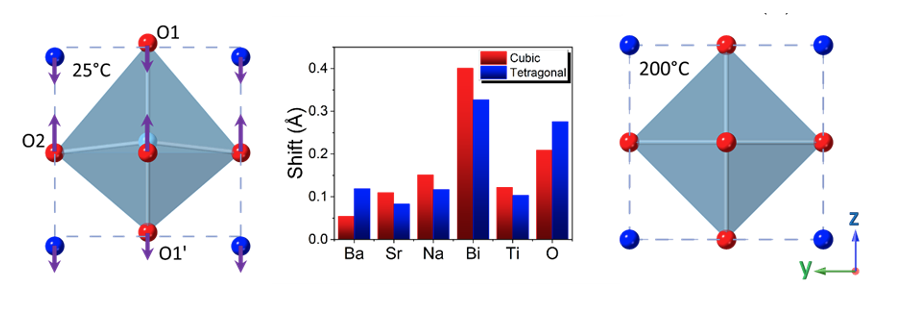New research challenges ideas on the origin of polarization in perovskite ferroelectrics
Ferroelectric materials are ubiquitous materials found in applications, ranging from actuators, to capacitors.

Origin of polarization in bismuth sodium titanate based ceramics, Hangfeng Zhang, Marcin Krynski, A. Dominic Fortes, Theo Graves Saunders, Matteo Palma, Yang Hao, Franciszek Krok, Haixue Yan and Isaac Abrahams J. Am. Chem. Soc. 2024, 146, 8, 5569–5579
The application of an electric field on these materials results the parallel alignment of dipoles and an increase in polarization. What makes ferroelectrics unique are the high values of polarization achieved and the fact that on removal of the applied field only some of the some polarization lost leaving a remnant polarization.
Our classical picture of ferroelectric behaviour comes from barium titanate, BaTiO3, an ABO3 type perovskite structured compound where polarization is said to arise from an axial displacement of Ti atoms within their octahedral sites, leading to a tetragonal distortion of the cubic perovskite structure.
However, new research at QMUL challenges the idea that the displacement of the B-site cations in perovskites is the main contributor to the polarization.1 Using a combination of high resolution neutron diffraction impedance spectroscopy and ab initio calculations on a barium bismuth sodium strontium titanate perovskite structured composition that in fact that the displacement of Ti contributes less than a third in magnitude to the overall polarization and that the displacements of the O2− ions and
the A-site cations, particularly Bi3+, are very significant. The work not only fundamentally changes the way we think that ferroelectrics work, but in understanding this mechanism more clearly could allow for new advanced ferroelectrics to be developed that could revolutionize areas such as energy storage.